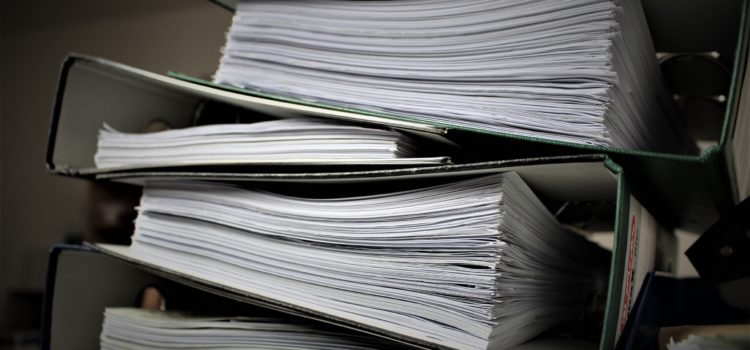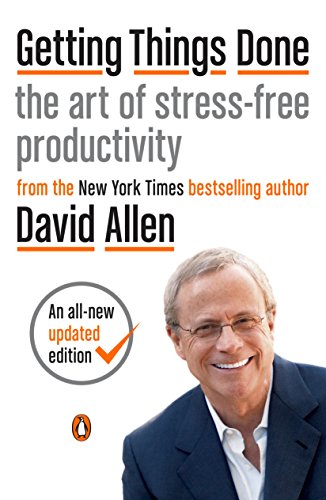

This article is an excerpt from the Shortform summary of "Getting Things Done" by David Allen. Shortform has the world's best summaries of books you should be reading.
Like this article? Sign up for a free trial here .
What is a Tickler system? How can a Tickler system help you master the Getting Things Done system?
A Tickler system is a method of organization that’s based on time management. With a Tickler system, you’ll be able to stay organized and complete tasks in the most logical way.
What Is a Tickler System and Why Do You Need One?
A Tickler file is a way to manage your work with a time-management based organizational system. The Tickler file is meant to help you prioritize tasks to maximize your time. A GTD tickler file is meant to work in conjunction with other GTD methods (think about the two minute rule) in order to allow you to optimize and declutter your organizational system. Keep reading to see how to Getting Things Done Tickler file works.
Organizing
The GTD Tickler File needs to be physically sorted. Once you’ve clarified what you need to do with each item, it’s time to physically sort them in your organizing system. You should now have an empty in-tray and two piles: a pile of reference items and a Pending pile.
You’ll organize the Pending pile by placing items in the following places (discussed in more detail below):
- Projects list
- Project support material folder
- Waiting For list
- Someday/Maybe list
- Tickler file
- Calendar actions/information
- Next Actions list
Your lists can be numbered lists (on paper or in digital form) or can be folders of papers labeled with separate items.
As you organize, keep in mind that although you threw away some items during Step 2, you might still come across items that, upon further consideration, you decide you don’t need. Trash them.
You won’t—and probably shouldn’t—crystallize your organization system when you first get the Getting Things Done Ticker File up and running. Your organization system needs to reflect what works best for you, and that will take time and some trial and error to figure out.
Now let’s take a closer look at each category, including the GTD Tickler File.
Tickler System
The second destination for “incubation” items is the Tickler system. If you want a reminder to revisit an item later, put it here. For example, if you have a flyer for a concert you want to attend, put the flyer in your Tickler file for the date the tickets go on sale.
A Getting Things Done Tickler file consists of 43 file folders: Twelve labeled with the months of the year and the rest labeled “1” through “31” for each day of the month. File agendas, flyers, and other documents into the file for the day you want to be reminded.
On the first day of each month, open that month’s file and put all the contents into your in-tray, then move that file to the back. Each day, do the same with that day’s folder contents and move the empty file behind the folder for the upcoming month so that tomorrow’s folder is always in front.
The Tickler system is a good place for:
- Travel documents you need on the day of a trip
- An agenda for the day of a meeting
- A report you want to read and review on a later date
- A flyer for an event you might be interested in attending
- A form that needs to be filled out for an appointment that day
If you’ll be away from your Tickler file for a weekend or a trip, pull all the contents for the days you’ll be gone before you leave.
Someday/Maybe List and Tickler System
Some things you’ve captured won’t be actionable yet—maybe a flyer for a concert that’s still a few months away, or an idea for a project you might want to do someday but don’t have time to begin now.
There are two options for these types of items:
1) Someday/Maybe list: This is a running list of things you might want to act on in the future, from learning a new language to making a personal website. You’ll review this list regularly so that you can decide when the time is right to pursue one of these ideas.
You might want to have various categories of Someday/Maybe lists, such as “Recipes to Try” and “Books to Read.”
2) Tickler system: A Tickler system is typically organized as a file that holds information and reminders you don’t need until a certain point in the future (for example, a flyer for a play that doesn’t debut for another three months). You can also use your calendar for this, for example making a note on March 15 that tax day is one month away.
Don’t Confuse “Someday/Maybe” With “Hold and Review”
Don’t use your Someday/Maybe file as a Hold-and-Review file, with things you may be interested in that you’ve set aside to process later. Doing this clogs your Someday/Maybe list with things that really need to be captured in your in-tray and clarified; some of your Hold-and-Review items will belong in your Someday/Maybe file, but others will probably end up in the trash, in your general-reference file, on your calendar, in a Tickler file, and even on your Next Actions list.
A Tickler system is a useful tool in staying organized. But remember, a Tickler system is only one of many tools in Getting Things Done, and you’ll need to make the Tickler system work with other skills in order to master GTD.

———End of Preview———
Like what you just read? Read the rest of the world's best summary of David Allen's "Getting Things Done" at Shortform .
Here's what you'll find in our full Getting Things Done summary :
- Why you're disorganized and your to-do list is a mess
- The simple workflow you can do everyday to be more productive than ever
- How to take complicated projects and simplify them






